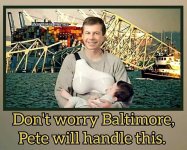You are using an out of date browser. It may not display this or other websites correctly.
You should upgrade or use an alternative browser.
You should upgrade or use an alternative browser.
Francis Scott Key Bridge collapses in Baltimore after ship strike
- Thread starter searcher
- Start date
Welcome to the Precious Metals Bug Forums
Welcome to the PMBug forums - a watering hole for folks interested in gold, silver, precious metals, sound money, investing, market and economic news, central bank monetary policies, politics and more. You can visit the forum page to see the list of forum nodes (categories/rooms) for topics.
Why not register an account and join the discussions? When you register an account and log in, you may enjoy additional benefits including no Google ads, market data/charts, access to trade/barter with the community and much more. Registering an account is free - you have nothing to lose!
- Messages
- 11,755
- Reaction score
- 2,568
- Points
- 238
Tensions rising in Congress over how to fund rebuilding of Baltimore's collapsed bridge
Two days after Baltimore's Francis Scott Key Bridge collapsed, signs of friction — or outright reluctance — are emerging among some lawmakers about using new federal dollars to rebuild it, even as President Joe Biden implores Congress to fully fund the recovery."It was kind of outrageous immediately for Biden to express in this tragedy the idea that he’s going to use federal funds to pay for the entirety," Rep. Dan Meuser told Fox Business on Thursday. "This is a crisis situation, but it needs a plan, not a knee-jerk spend reaction."
The Pennsylvania Republican suggested that instead of spending new money for reconstruction of the bridge, lawmakers pull cash from the "ridiculous" electric vehicle deployment program that Congress voted to create earlier in Biden's administration.
Those comments didn't sit well with Democratic Rep. Kweisi Mfume, in whose district the bridge is located. He called Meuser's position "short-sighted," noting that the Pennsylvania Republican co-chairs the Congressional Coal Caucus, which advocates for one of the main exports of the Port of Baltimore.
- Messages
- 11,755
- Reaction score
- 2,568
- Points
- 238
Captain Tim shares his thoughts.
You might be wondering why the MV Dali didn't have tugs on here transit through Baltimore harbor. These are my thoughts.
11:28
Channel: https://www.youtube.com/@TimBatSea/videos
Link to Tim's sailboat channel: https://www.youtube.com/@svpaquita/videos
Why No Tugs MV Dali/Key Bridge Baltimore
Mar 28, 2024You might be wondering why the MV Dali didn't have tugs on here transit through Baltimore harbor. These are my thoughts.
11:28
Channel: https://www.youtube.com/@TimBatSea/videos
Link to Tim's sailboat channel: https://www.youtube.com/@svpaquita/videos
- Messages
- 10,030
- Reaction score
- 7,797
- Points
- 238
Workers were on break in cars when Baltimore bridge collapsed, wife of survivor says
‘We don’t know if they were warned before the impact,’ says wife of one of eight construction workers who was on the bridgeThe construction workers who were on the Francis Scott Key Bridge when it collapsed in the early hours of Tuesday were on break in their cars, according to the wife of one of the construction workers who survived.
Speaking to NBC on Thursday, the wife of Julio Cervantes, one of the eight construction workers who was on the bridge when it collapsed, said: “All of the men were on a break in their cars when the boat hit. We don’t know if they were warned before the impact.”
“My husband doesn’t know how to swim. It is a miracle he survived,” Cervantes’s wife said, adding that her husband was treated for a chest wound in the hospital and released on the same day.
On Wednesday, officials announced that the bodies of two men who were trapped in their vehicle were recovered from the Patapsco River.
The men were identified as 35-year old Alejandro Hernandez Fuentes, who was originally from Mexico living in Baltimore, as well as 26-year old Dorlian Ronial Castillo Cabrera, who was from Guatemala and was living in Dundalk, Maryland.
Officials said divers discovered the bodies in a red pickup truck in the river near the mid-span of the bridge.
Cervantes’s wife, who withheld her name, told NBC that her brother-in-law was one of the men whose bodies were recovered but did not disclose his name.
Four other construction workers who had been on the bridge remain missing and are presumed dead. The workers on the bridge, eight in total, came from Mexico, Guatemala, Honduras and El Salvador, authorities said.
Cervantes’s wife also said her nephew is among the other missing men, adding that her entire family is of Mexican origin, NBC reported.
In a statement on Wednesday, the Mexican foreign ministry said two people who are missing were originally from Veracruz and Michoacán.
Other people who are missing include 49-year-old Miguel Luna from El Salvador, a husband and father of three who lived in Maryland for over 19 years, and 38-year-old Maynor Yassir Suazo Sandoval, originally from Azacualpa in Honduras, a married father of two who had lived in the US for 18 years and launched his own maintenance business.
A crowdfunding campaign set up by the Latino Racial Justice Circle, a non-profit organization serving the Baltimore area, had raised nearly $100,000 for the victims’ families as of Wednesday afternoon. The funds will be distributed across the families and will be put towards basic needs including rent, groceries and utilities, the campaign said.
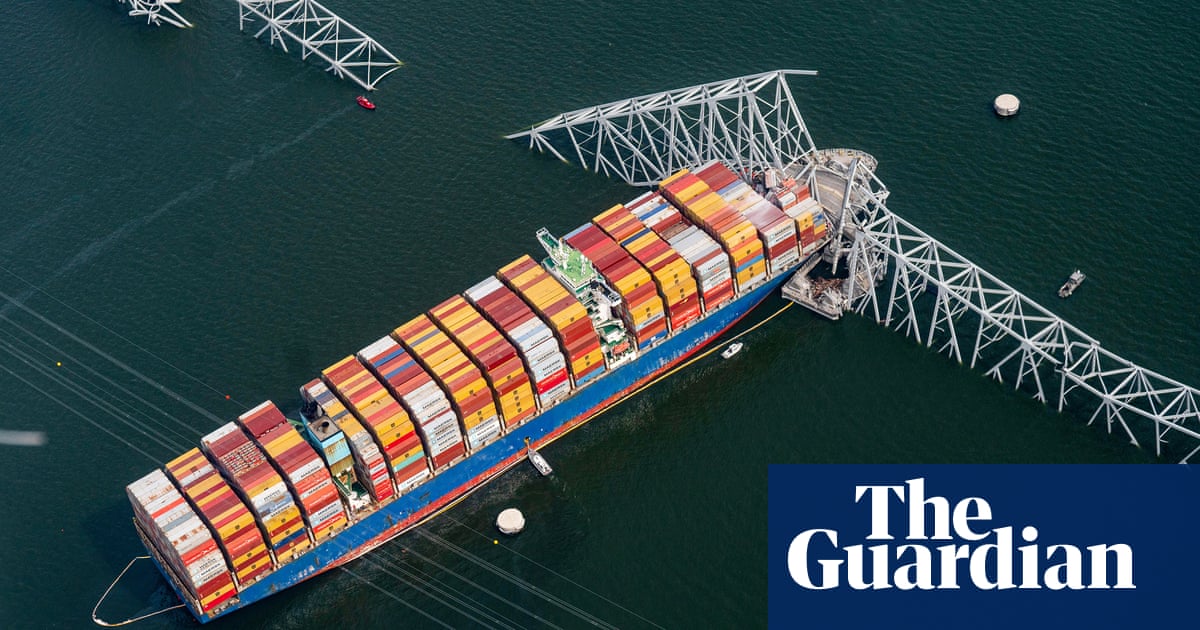
Workers were on break in cars when Baltimore bridge collapsed, wife of survivor says
‘We don’t know if they were warned before the impact,’ says wife of one of eight construction workers who was on the bridge
- Messages
- 10,030
- Reaction score
- 7,797
- Points
- 238
Listening now, but the cost of tugs would be the reason IMO.Why No Tugs MV Dali/Key Bridge Baltimore
Probably wouldn't cost as much as a new bridge... but hindsight is always 20/20....
also this gets covered in this video:
Another thought is why ports are so far up the bay? There's more open water (arrows) where they could relocate ports for loading etc.Q&A on MV Dali versus Bridge with What's Going on With Shipping and gCaptain
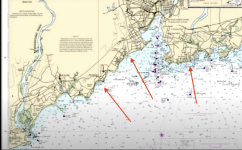
Last edited:
- Messages
- 11,755
- Reaction score
- 2,568
- Points
- 238
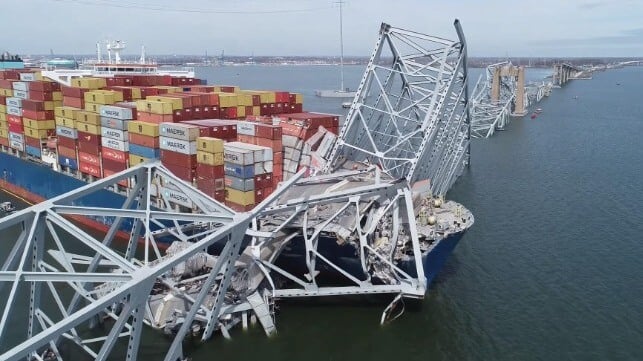
Baltimore Bridge's Weight is Pinning Container Ship Dali to the Bottom
In a reversal of the usual order for a major marine salvage operation, the U.S. Army Corps of Engineers (USACE) and its contractors will make the firs...
Well, the whole POINT of insurance, is, when property is damaged, or liability determined...the insurer pays to make the injured parties whole, make restitution.Probably wouldn't cost as much as a new bridge... but hindsight is always 20/20....
WHY IS THE INSURER NOT PAYING FOR THIS BRIDGE.
There would not NEED to be tugs on a ship moving in a tangent in the shipping channel...IF that ship were seaworthy.
Power problems pierside and again a few minutes beforehand, showed the ship WAS NOT.
The ship's master is liable - not for political sabotage, not for terrorism, but for reckless malfeasance. He should have notified the owners and the port of Baltimore that he had mechanical/electrical issues that needed repair.
Ever trace a railway line? Often times it zigzags, or uses far more land, more distance, than it needs.Another thought is why ports are so far up the bay? There's more open water (arrows) where they could relocate ports for loading etc.
The reasons are simple. First, when built, there were not the construction techniques we have today. Second, the railroad had to BUY the land, and there were MANY cases land would not be SOLD.
And cities like Chicago saw wealth to be made from being a railroad hub. Today, it's an inconvenience, but the tracks are laid and the property is purchased.,
That second reason is likely why these ports are so far upstream. Land further out, was either not for sale, or political officials had other uses in mind (one large plot was a shipyard for Navy construction, a century ago) or there was not the flood- or tidewater-control techniques available now. And ships were of course much smaller, just forty years ago.
- Messages
- 10,030
- Reaction score
- 7,797
- Points
- 238
NEW NTSB Video On Dali Ship Point of Impact Key Bridge
The NTSB released more new videos of them touring the bridge impact damaged inside of the Dali ship that crashed into the Francis Scott Key bridge, causing it to collapse. They also inspected some potentially hazardous chemicals and showed them pulling data out of the VDR (Voyage Data Recorder) and shared some preliminary data.02:16 Testing for hazardous chemicals
04:53 Possible damage inside the Dali ship's bow
06:17 Reading data from Voyage Daa Recorder (VDR)
08:01 Construction workers were in vehicles on Key Bridge
09:57 Dali cargo ship suffered electrical issues at the dock in Baltimore
13m
- Messages
- 10,030
- Reaction score
- 7,797
- Points
- 238
Smacks of coverup...WHY IS THE INSURER NOT PAYING FOR THIS BRIDGE.
- Messages
- 11,755
- Reaction score
- 2,568
- Points
- 238
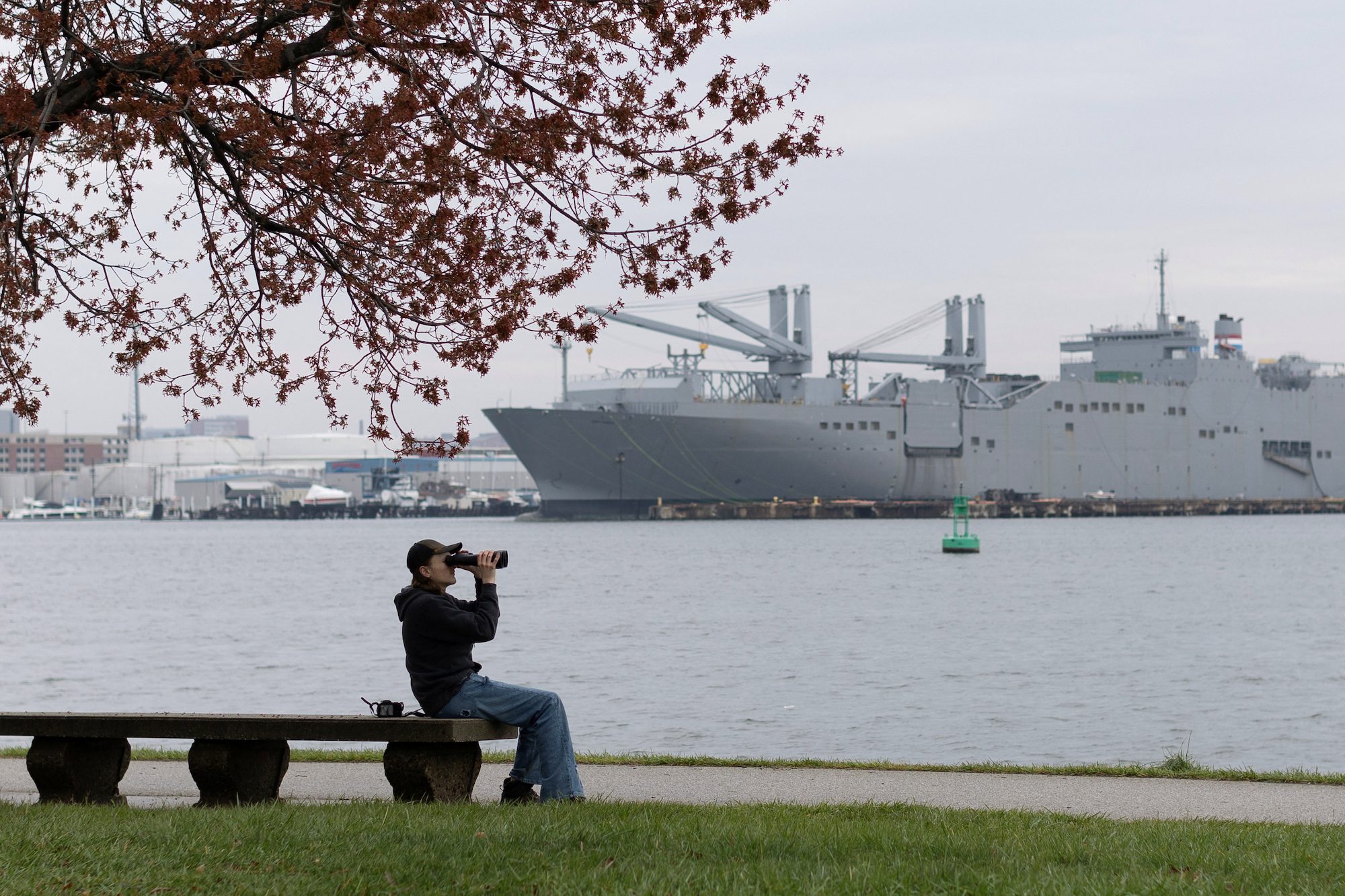
These Are the Ships Stuck Behind the Baltimore Key Bridge
The collapse of the Francis Scott Key Bridge has brought navigation into and out of the Port of Baltimore to a standstill. Behind the collapsed bridge is located every terminal...
 gcaptain.com
gcaptain.com
- Messages
- 11,755
- Reaction score
- 2,568
- Points
- 238
Jeff is a merchant seaman who hails from Baltimore. In this vid he gives his thought on the accident.
This is just my thoughts about the disaster in Baltimore where the Francis Scott Key Bridge was hit by the container ship Dali...
15:06
Channel: https://www.youtube.com/@JeffOnboard/videos
Francis Scott Key Bridge Collapse (My Comments)
Mar 28, 2024This is just my thoughts about the disaster in Baltimore where the Francis Scott Key Bridge was hit by the container ship Dali...
15:06
Channel: https://www.youtube.com/@JeffOnboard/videos
- Messages
- 11,755
- Reaction score
- 2,568
- Points
- 238
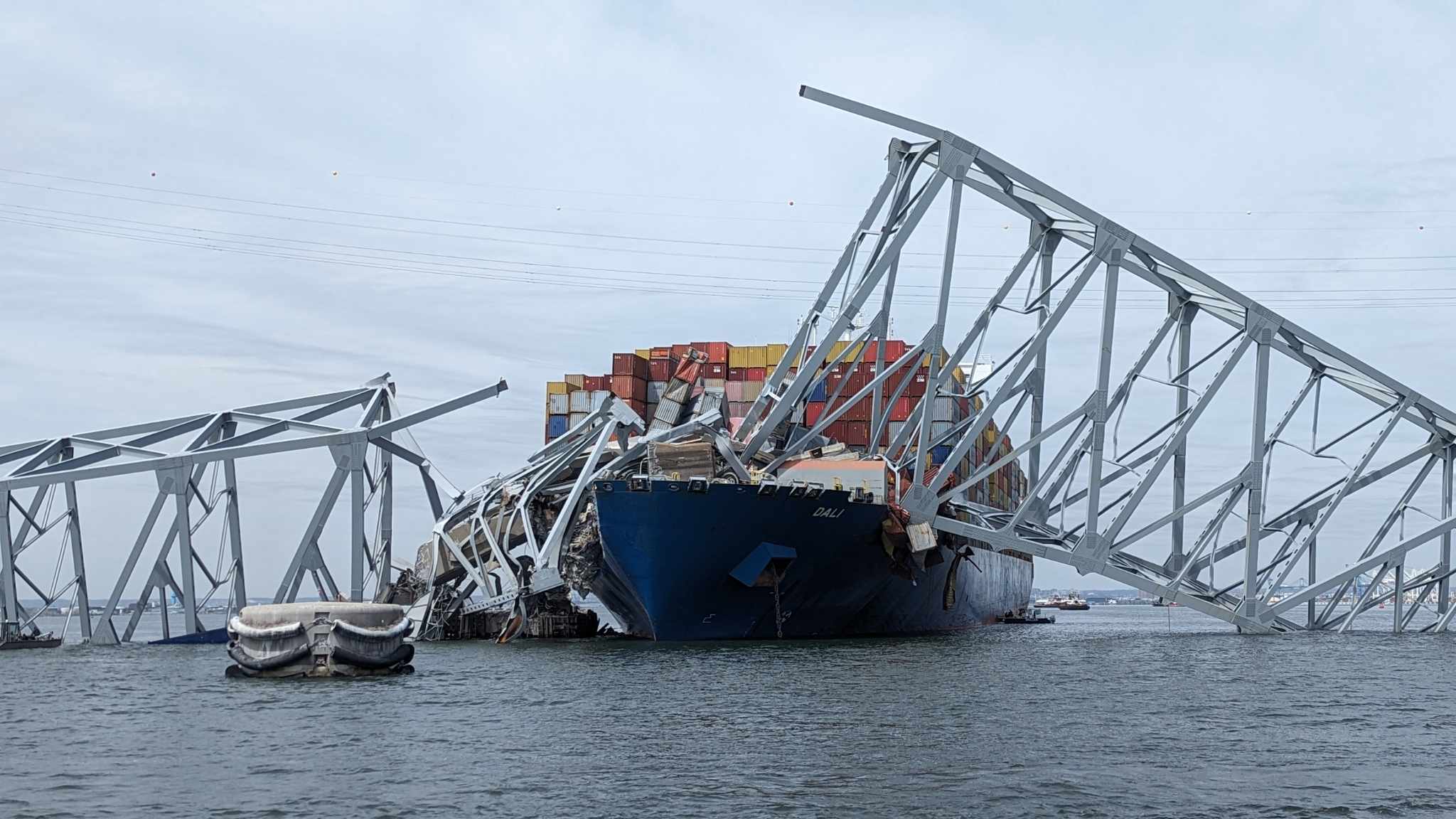
Baltimore Bridge’s $2 Billion Rebuild Starts With Clearing Ship
By Nacha Cattan (Bloomberg) — A salvage firm that helped contain the Deepwater Horizon oil spill and safely blow up part of New York’s Tappan Zee Bridge is heading to Baltimore as a...
 gcaptain.com
gcaptain.com
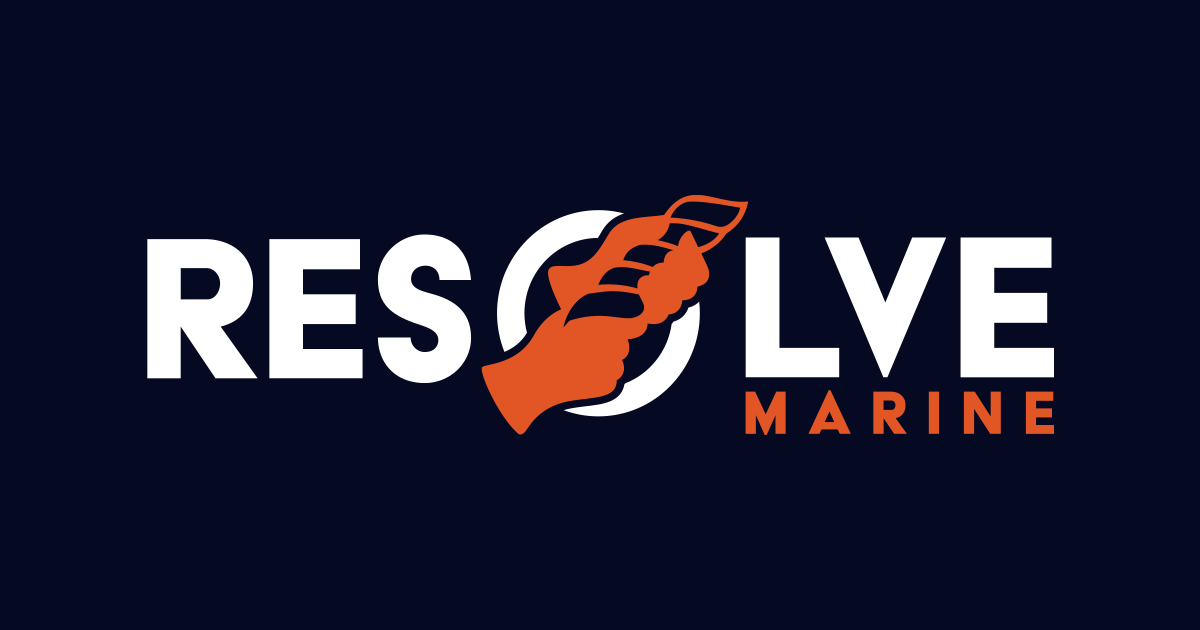
Resolve Marine: Maritime Response, Recovery & Compliance
Resolve Marine: Leading maritime response, recovery, engineering and compliance.
resolvemarine.com
- Messages
- 11,755
- Reaction score
- 2,568
- Points
- 238
Captain Tim shares his thoughts.
Why No Tugs MV Dali/Key Bridge Baltimore
Mar 28, 2024
You might be wondering why the MV Dali didn't have tugs on here transit through Baltimore harbor. These are my thoughts.
11:28
Channel: https://www.youtube.com/@TimBatSea/videos
Link to Tim's sailboat channel: https://www.youtube.com/@svpaquita/videos
In part 2 Captain Tim tries to clarify what he said / what he meant in the original vid. I'm guessing some people either didn't understand what he was saying or took what he said out of context. Happens to me here a lot (lol.)
Tim's a tow boat captain out of NYC, and in his spare time he sails around on his sailboat Paquita (getting ready to sail the world when he retires.)
15:12
It's not a conspiracy. It's a bunch of screwups which is how the world is going.
The odds are not in that favor. The ship was going too fast and aimed right at the support.
^^^^^^^^
You beat me to it.
Sal also shows my knowledge is a bit dated. Nonetheless, and even though he's quick to use NTSB statements for support...even so, he's got cred that anon Eww Toob posters aren't displaying. He's a licensed Merchant Marine First Mate and is an instructor at a maritime academy.
Sal says there wasn't time to reverse the engines - which may well be true. I was going on the idea they may have had a variable-pitch screw, where the blades could be flattened and even reverse-angled to back up. I guess the modern way, with a marine diesel, is to stop it and restart it in the opposite direction. Which would work on a two-stroke diesel, something I didn't know these big marine engines were.
He also discusses protocols when power is lost, and why it might be lost - why it was that the backup generators didn't kick right in.
You beat me to it.
Sal also shows my knowledge is a bit dated. Nonetheless, and even though he's quick to use NTSB statements for support...even so, he's got cred that anon Eww Toob posters aren't displaying. He's a licensed Merchant Marine First Mate and is an instructor at a maritime academy.
Sal says there wasn't time to reverse the engines - which may well be true. I was going on the idea they may have had a variable-pitch screw, where the blades could be flattened and even reverse-angled to back up. I guess the modern way, with a marine diesel, is to stop it and restart it in the opposite direction. Which would work on a two-stroke diesel, something I didn't know these big marine engines were.
He also discusses protocols when power is lost, and why it might be lost - why it was that the backup generators didn't kick right in.
- Messages
- 10,030
- Reaction score
- 7,797
- Points
- 238
This will give you an idea...
A quick walk around the ships engine room for departure preparation.
I didn't have a chance to film every thing but this gives people a basic idea of what goes on down below when getting the ship ready to go to sea.
This ship is a Bulk Carrier - Its specs are:
Length - 291m
Beam - 45m
Depth - 25.7m
Draft - 16.5m
DWT - 180,000 tonnes
Cargo hold capacity - 199,293 m^3
Engine Maximum continuous rating - 18,660 kW x 91 RPM
7m
Ship's Engine Start Up
ENGINE STARTS - @3:23A quick walk around the ships engine room for departure preparation.
I didn't have a chance to film every thing but this gives people a basic idea of what goes on down below when getting the ship ready to go to sea.
This ship is a Bulk Carrier - Its specs are:
Length - 291m
Beam - 45m
Depth - 25.7m
Draft - 16.5m
DWT - 180,000 tonnes
Cargo hold capacity - 199,293 m^3
Engine Maximum continuous rating - 18,660 kW x 91 RPM
7m
Last edited:
- Messages
- 10,030
- Reaction score
- 7,797
- Points
- 238
- Messages
- 11,755
- Reaction score
- 2,568
- Points
- 238
Crane Linked to CIA Soviet Sub Misson Now on Station at Key Bridge Collapse
Three cranes, all contracted through the Naval Sea Systems Command, have arrived in Baltimore, Md., to help remove the wreckage of the Francis Scott Key Bridge after a cargo ship hit the bridge Tuesday morning, causing it to collapse.Chesapeake, a 1,000-ton lift-capacity derrick barge – the largest crane on the East Coast – arrived by Friday, as well as Ferrell, a 200-ton lift-capacity revolving crane barge, and Oyster, a 150-ton lift-capacity crane barge. The Navy is also sending another 400-ton lift capacity barge, expected to arrive next week, according to a Navy release.
Navy’s Supervisor of Salvage and Diving will use the four barges to lift the submerged parts of the Key Bridge from the Patapsco River. The bridge will be disassembled and removed section by section, according to the Navy release. Each piece will be lifted on the barges and then transported away.
More:
- Messages
- 10,030
- Reaction score
- 7,797
- Points
- 238
synopsis
12m
Expert Ships Engineer Reacts to Baltimore Bridge Crash
Mv Dali crash at Baltimore.Ive served as a ships engineer for 40 years on a variety of ships. including container ships, passenger vessels, fishing boats, dredgers and research vessels.12m
Saying he was a Chief Engineer and BEING one, are two different things.
Maersk was only the lessor on that ship. It was owned and operated by a Singapore company.
There are backup power networks. How do they interface? What tripped the main power in the first place? Since backup generators are mostly used in-port when there's no shore power available, why would they power the rudder system?
How do you steer a ship that has no power? Anyone who's done any small-boat operation, involving an inboard boat - or even an outboard - knows, without any kind of thrust, a rudder blade in the water (or outboard lower-unit) just sits there. If your engine is dead and you need to steer, you use a pole or paddle. On a larger boat, you may have to use some sort of sea-anchor to put drag where you need it to get yourself aimed in the right way.
There are plenty of documentaries online about maritime accidents where a ship loses power, is adrift in a storm, and thus drifts broadside and takes water or rolls over. This just happened in-port. It was entirely predictable because there HAD BEEN power outages while tied up at the quay.
Obviously the ship's master wanted not to cause problems with his supervisors by ordering a delay to repair or identify the problems. This, too, is commonplace - ship captains under deadline pressure, cutting corners.
Saying he was a Chief Engineer and BEING one, are two different things.
Maersk was only the lessor on that ship. It was owned and operated by a Singapore company. ...
This isn't my wheelhouse, but Sal Mercogliano is apparently a respected voice in the sphere and if says the guy is legit, I'll give him the benefit of the doubt until shown otherwise. Also, Maersk is a huge company. Michael Buckley claims to be chief engineer for Maersk Line Ltd. That appears to be a subsidiary that handles shipping:
Maersk Line Limited owns and operates US flag vessels, providing end-to-end transportation solutions to support the unique requirements of the US government.
...
I would think he understands a little about the ships they are using (even the ones they contract).
- Messages
- 11,755
- Reaction score
- 2,568
- Points
- 238
USACE press release
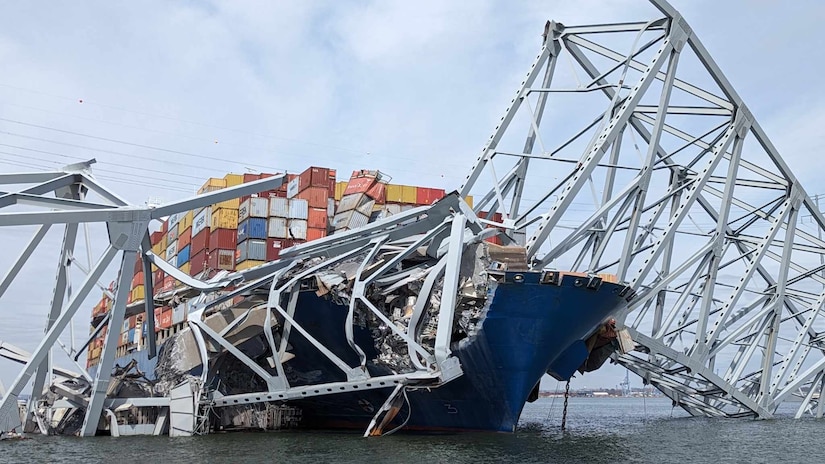
U.S. Army Corps of Engineers leading effort to clear Fort McHenry Channel following Key Br
U.S. Army Corps of Engineers (USACE), Baltimore District activated its Emergency Operations Center March 26, clearing the way for engineering, construction, contracting and operations specialists to
www.nab.usace.army.mil
- Messages
- 11,755
- Reaction score
- 2,568
- Points
- 238
This is drone footage of the Chesapeake 1000 (already on scene) made by Meow Man 9 years ago. It's 4 and a half mins long.
If you're wondering who the hell Meow Man is / was = https://www.goodreads.com/book/show/48567532-meow-man-suk-ma-bag
If you're wondering who the hell Meow Man is / was = https://www.goodreads.com/book/show/48567532-meow-man-suk-ma-bag
- Messages
- 11,755
- Reaction score
- 2,568
- Points
- 238
That link goes to an archive. You can copy/paste press releases without any worries about copyright FYI.
U.S. Army Corps of Engineers leading effort to clear Fort McHenry Channel following Key Bridge collapse
BALTIMORE --
U.S. Army Corps of Engineers (USACE), Baltimore District activated its Emergency Operations Center March 26, clearing the way for engineering, construction, contracting and operations specialists to begin the complex process of clearing the damage and debris along the Fort McHenry Channel following the collapse of the Francis Scott Key Bridge, to restore safe navigation in and out of the Port of Baltimore.
Together, through the efforts of the Unified Command, USACE is working to determine the actions required to remove the fallen debris. Preliminary underwater analysis and assessment is currently underway, providing critical data that will assist in future operations.
The data collected during this process will help determine the operational plan moving forward needed to reopen the federal channel.
“We continue to provide our best talent and technology in support of the Coast Guard and our local, state and federal partners,” said USACE Commanding General Lt. Gen. Scott Spellmon. “The U.S. Army Corps of Engineers is responsible for engineering solutions to our nation’s toughest challenges, and this disaster constitutes one of those top challenges. It requires a deliberate, diligent engineering strategy, based on careful assessments of the disaster site, and with safety as our top priority.”
As of March 30, USACE is providing:
- Certified underwater assessment capabilities by Structural Professional Engineers, Remotely Operated Vehicle and sonar;
- Structural Engineering support, including certified bridge safety inspectors and urban search and rescue structural technical specialists;
- Waterway debris management, led by USACE debris removal vessel REYNOLDS, which patrols the waters of the Baltimore Harbor and Patapsco River for drift and debris that could be hazardous to navigation; Hydrographic and topographic surveying via the CATLETT, a 61-foot survey vessel that actively supports the Baltimore District’s Navigation Branch. Two survey vessels from USACE, Philadelphia District, H.R. SPIES and the DAUNTLESS, are also providing support.
- Additional USACE vessels are prepared to join efforts as needed for waterway debris management, led by USACE debris removal vessel REYNOLDS;
- USACE dive safety experts from the Philadelphia, Buffalo, and New England Districts are preparing to join the response effort.
“We have marshalled incredible skills and the best equipment available. I am fully confident that we have the right team and partners in place to tackle this project and do what we do best – serve and strengthen this great Nation,” said USACE Baltimore District Commander Col. Estee Pinchasin. “Many of our USACE Baltimore teammates were born and raised locally. We are deeply invested and fully committed. We are ready to get to work.”
Additional Information
Baltimore District delivers vital engineering solutions in collaboration with its partners to serve and strengthen the Nation, energize the economy, and reduce disaster risks. Headquartered near Baltimore’s Inner Harbor, Baltimore District provides design, engineering, construction, environmental, and real estate expertise to various important projects and customers. This support spans five states, the District of Columbia, overseas, and the Susquehanna, Potomac, and Chesapeake Bay watersheds. These civil and military missions and diverse engineering services support communities and warfighters while addressing the ever-growing list of emerging national security requirements and ultimately protecting the Nation.
- Messages
- 10,030
- Reaction score
- 7,797
- Points
- 238
Close look at complex Baltimore collapse site cleanup operation
A massive cleanup operation is underway in Baltimore to remove the wreckage after the Francis Scott Key Bridge collapse on Tuesday. The Navy is providing at least four cranes — including the largest crane on the Eastern Seaboard — to help with the efforts.28m
I agree, 100-percent. Sal is probably the gold standard of insider information regarding this event. I think he's putting too much stock in NTSA statements - anything the bureaucracy says should be taken with a huge rock of salt - but otherwise, I find him credible.This isn't my wheelhouse, but Sal Mercogliano is apparently a respected voice in the sphere and if says the guy is legit, I'll give him the benefit of the doubt until shown otherwise.
Perhaps I was misreading a quote. I'm referring to another post, where a guy claims to have been a "chief engineer" on a Maersk freighter and thus, it couldn't have happened as we're being told.
Events like this make all the rock heads pop out. I just threw out one mp3 podcast, where the yakker, with Clif High as a guest, started winding up that it's "Always" the Deep State.
He might as well assassinate his brains. It's not always the Deep State, any more than it's always cowinky-dink. We're surrounded by liars - and some of them are on our side, we have to sift carefully.
...
Perhaps I was misreading a quote....
Sal is the guy who shared the screenshot/image of the Maersk guy's comments. Sal vouched for him.
- Messages
- 11,755
- Reaction score
- 2,568
- Points
- 238
I hope this isn't copyrighted.
Saturday, March 30, 2024
BALTIMORE – The Unified Command commenced bridge wreckage removal Saturday to remove debris from the Francis Scott Key Bridge collapse.
Highly trained demolition crews will begin cutting the top portion of the north side of the collapsed bridge into smaller sections for safe removal by crane. One crane barge and one working barge are staged at the incident to support Saturday’s operations.
Salvage teams will use gas-powered cutters to systematically separate sections of the steel bridge, which will be taken to a disposal site. At the same time, salvage divers continue to conduct underwater assessments of the work site to support further operations. Every lifting operation requires engineering analysis to inform salvage operation plans.
The Unified Command is working in partnership with BGE to reduce pressure of an underwater pipeline that spans the width of the channel and runs under the incident site. Unified Command is coordinating to inert the pipeline to free it from hazards and risk. Pipeline operations will continue through the weekend.
The Unified Command continues to maintain a 2000-yard maritime Safety Zone for the M/V Dali recovery efforts, a Temporary Flight Restriction with a radius of three nautical miles from the surface, up to and including 1,500 feet above ground level also remains in effect.
The Safety Zone is enforced for the protection of personnel, vessels, and the marine environment from the potential hazards associated with salvage work. The vessel remains stable with crew aboard.
The Key Bridge Response 2024 Unified Command includes the:
U.S. Coast Guard
U.S. Army Corps of Engineers
Maryland Department of the Environment
Maryland Transportation Authority
Witt O’Brien’s representing Synergy Marine
Maryland State Police
A website with incident response information can be found at the following URL:
https://www.keybridgeresponse2024.com
The media is requested to call the Joint Information Center at 410-631-8939 for interview response inquiries and interviews.
The Unified Command’s operational priorities are ensuring the safety of the public and first responders, accountability of missing persons, safely restoring transportation infrastructure and commerce, protecting the environment, and supporting the investigation.
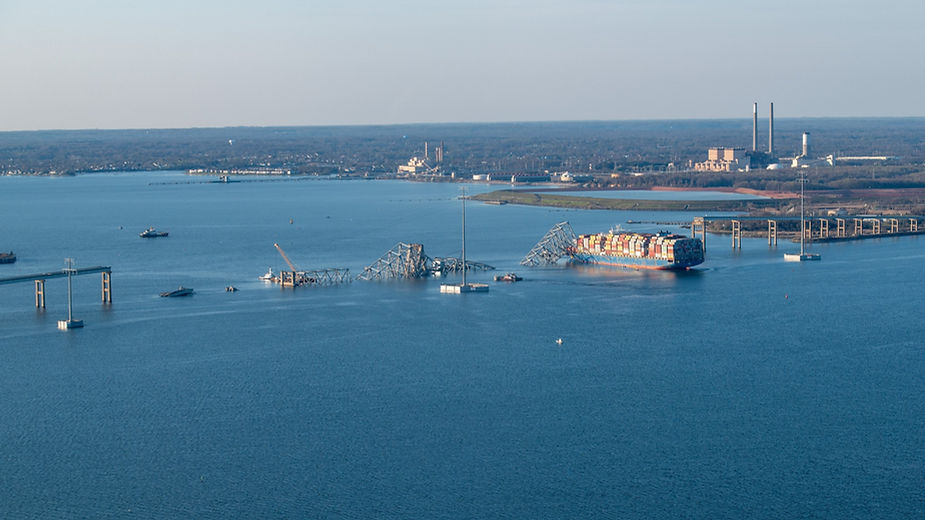
The M/V Dali is shown with the collapsed Francis Scott Key Bridge on March 30, 2024, in Baltimore. The Key Bridge Response Unified Command priorities are ensuring the safety of the public and first responders, accountability of missing persons, safely restoring transportation infrastructure and commerce, protecting the environment, and supporting the investigation. (U.S. Coast Guard photo by Petty Officer 3rd Class Kimberly Reaves)
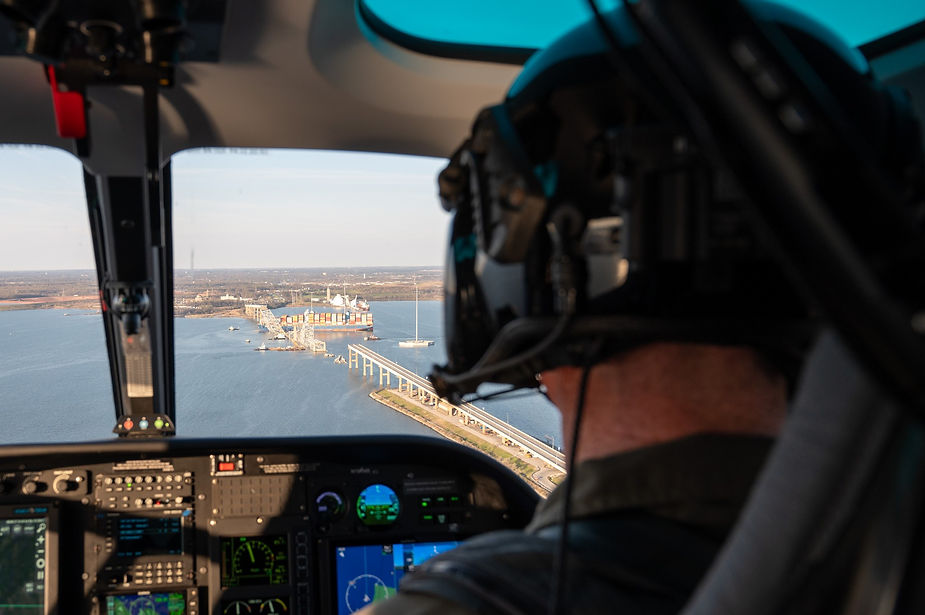
A Maryland Natural Resources Police officer conducts an overflight assessment of the M/V Dali, a 948-foot Singapore-flagged container ship, and Francis Scott Key Bridge in the Patapsco River in Baltimore, Maryland, March 30, 2024. The Unified Command continues to coordinate response operations for the Francis Scott Key Bridge while safeguarding the welfare of both the public and first responders. (U.S. Coast Guard photo by Petty Officer 3rd Class Kimberly Reaves)
- 3 hours ago
- 2 min read
UPDATE 1: Unified Command commences bridge wreckage removal for Key Bridge Response 2024
Saturday, March 30, 2024
BALTIMORE – The Unified Command commenced bridge wreckage removal Saturday to remove debris from the Francis Scott Key Bridge collapse.
Highly trained demolition crews will begin cutting the top portion of the north side of the collapsed bridge into smaller sections for safe removal by crane. One crane barge and one working barge are staged at the incident to support Saturday’s operations.
Salvage teams will use gas-powered cutters to systematically separate sections of the steel bridge, which will be taken to a disposal site. At the same time, salvage divers continue to conduct underwater assessments of the work site to support further operations. Every lifting operation requires engineering analysis to inform salvage operation plans.
The Unified Command is working in partnership with BGE to reduce pressure of an underwater pipeline that spans the width of the channel and runs under the incident site. Unified Command is coordinating to inert the pipeline to free it from hazards and risk. Pipeline operations will continue through the weekend.
The Unified Command continues to maintain a 2000-yard maritime Safety Zone for the M/V Dali recovery efforts, a Temporary Flight Restriction with a radius of three nautical miles from the surface, up to and including 1,500 feet above ground level also remains in effect.
The Safety Zone is enforced for the protection of personnel, vessels, and the marine environment from the potential hazards associated with salvage work. The vessel remains stable with crew aboard.
The Key Bridge Response 2024 Unified Command includes the:
U.S. Coast Guard
U.S. Army Corps of Engineers
Maryland Department of the Environment
Maryland Transportation Authority
Witt O’Brien’s representing Synergy Marine
Maryland State Police
A website with incident response information can be found at the following URL:
https://www.keybridgeresponse2024.com
The media is requested to call the Joint Information Center at 410-631-8939 for interview response inquiries and interviews.
The Unified Command’s operational priorities are ensuring the safety of the public and first responders, accountability of missing persons, safely restoring transportation infrastructure and commerce, protecting the environment, and supporting the investigation.

The M/V Dali is shown with the collapsed Francis Scott Key Bridge on March 30, 2024, in Baltimore. The Key Bridge Response Unified Command priorities are ensuring the safety of the public and first responders, accountability of missing persons, safely restoring transportation infrastructure and commerce, protecting the environment, and supporting the investigation. (U.S. Coast Guard photo by Petty Officer 3rd Class Kimberly Reaves)

A Maryland Natural Resources Police officer conducts an overflight assessment of the M/V Dali, a 948-foot Singapore-flagged container ship, and Francis Scott Key Bridge in the Patapsco River in Baltimore, Maryland, March 30, 2024. The Unified Command continues to coordinate response operations for the Francis Scott Key Bridge while safeguarding the welfare of both the public and first responders. (U.S. Coast Guard photo by Petty Officer 3rd Class Kimberly Reaves)
It's not a conspiracy. It's a bunch of screwups which is how the world is going.
Just before impact, it turned towards the bridge support due to something called the paddle wheel effect.The odds are not in that favor. The ship was going too fast and aimed right at the support.
They went full astern. In forward motion, the prop turns clockwise when viewed from behind. That motion puts a torque on the vessel that wants to push the bow to port. When you suddenly reverse the prop, it pulls the stern to port and therefore the bow will turn starboard.
Add in 9 knots of forward momentum and you get a course that might look to the layman as them aiming for the bridge support.
- Messages
- 10,030
- Reaction score
- 7,797
- Points
- 238
Exactly.... It's not as if they had any means of steering the ship.Just before impact, it turned towards the bridge support due to something called the paddle wheel effect.
They went full astern. In forward motion, the prop turns clockwise when viewed from behind. That motion puts a torque on the vessel that wants to push the bow to port. When you suddenly reverse the prop, it pulls the stern to port and therefore the bow will turn starboard.
Add in 9 knots of forward momentum and you get a course that might look to the layman as them aiming for the bridge support.
Same thing happens when on a motorcycle. If you want to screw up on a motorbike, turn the wheel to the right like a car to 'stay in your lane' on a curve and you will find yourself going left into the left lane! Gyroscopic forces of the wheels will send you left.
It's counter intuitive.
The correct way to stay in your lane is to lean into the curve and the bike will follow that path.
The captain did NOT make a mistake reversing the prop. He was attempting to reverse direction and for the reasons Joe mentioned the ship swerved. If he had more time and distance he would have been successful, but he ran out of both.
Looking at the pictures and videos the site seems so small, but the reality is the accident site is HUGE! Semitrucks traversed that bridge. Unless the salvage company works a miracle it's going to be at least a year (including winter) before ships can pass through and years before they get a bridge built.

